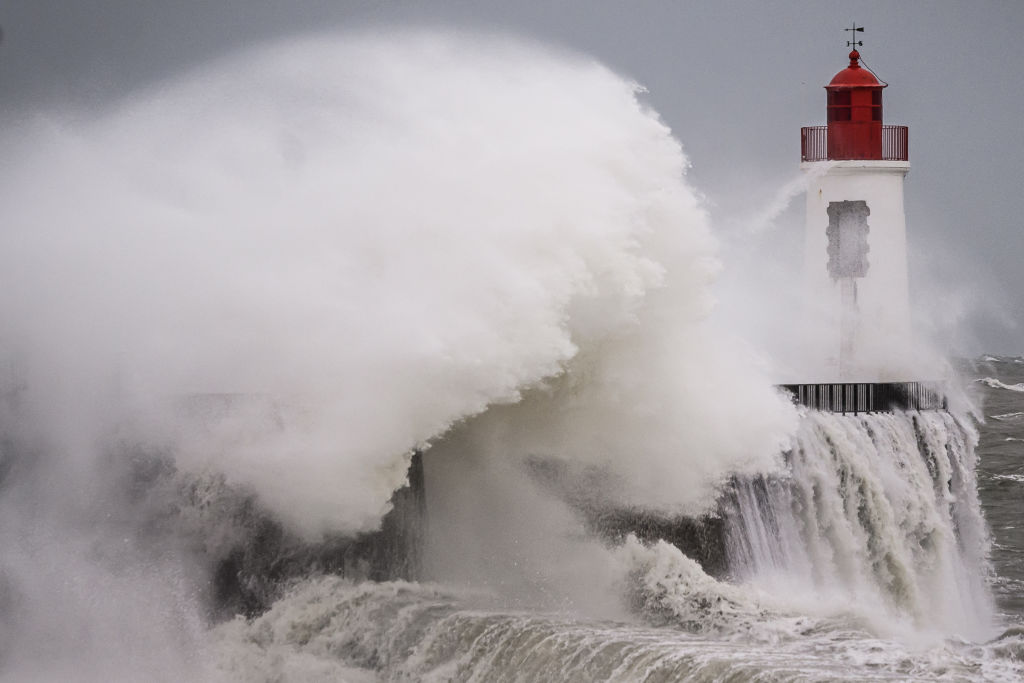
Hulu’s Pizza Reality Show ‘Best in Dough’ Doesn’t Rise to the Occasion
Reality competition shows are locked in their own battle.
Gone are the days where it was just “Survivor,” “American Idol,” and “The Bachelor” — three giants that still loom but have spawned dozens of imitators in the past 20 years. Any new show in the genre must now not only crown a winner, but set itself apart in order to make a lasting impression.
Enter Hulu’s “Best in Dough,” a pizza making competition series hosted by Bachelor Nation’s Wells Adams. In each 30-minute episode Adams, along with Chef Daniele Uditi and a third guest judge, review pizzas made by various groups: Italian nonnas, social media influencers, grill masters, and more. These groups don’t compete with each other, but amongst themselves, which is a missed opportunity for the crazy chemistry of nonnas chiding college students or independent pizza makers facing off with pizza establishments. Chemistry between competitors is what pops on so many reality cooking shows, and in the three episodes screened for critics, “Best in Dough” doesn’t sit in that enough.
At present, Hulu’s nonfiction originals are nearly all documentary or similar, except for one reality juggernaut: “The Kardashians.” “Best in Dough”s closest cousin is “Baker’s Dozen,” the Cooking Channel series where 13 bakers try to wow the judges with pastry confections. “Best in Dough” feels very much like Hulu trying to tap into the loyal audience of the Cooking Channel, Food Network, and Netflix’s “Great British Baking Show” — the OG in an ever-widening field.
As such, “Best in Dough” has maybe too many ingredients for those disparate TV flavor notes to shine through. There’s the guest judge component, a staple of reality television but which in this format doesn’t give visitors much opportunity to make an impression. Uditi is a high point, with his deep Italian roots, decades of expertise, and apparent ease in front of the camera. Adams comes off instinctively try-hard by juxtaposition alone; though he’s affable enough, the show could do with a celebrity X factor either more in line with its premise, or completely out of left field.
In Episode 2, Adams congratulates a contestant on trying something new for the first time on national television.
“I’ve done that a few times and it hasn’t worked out so well for me,” he says. Barely missing a beat, the contestant says, “I want to hear that story,” which suggests he has no idea who Adams is or why he’s hosting a pizza show. It’s a moment that could nosepe into viral awkwardness or hilarity, but a quick cutaway drops any intrigue and takes us back to the calzones.

<
p id=”caption-attachment-1234764094″>The Nonnas in Episode 101 of “Best in Dough”
Michael Desmond/Hulu
The same awkwardness is true of the contestant categories, which add fascinating color that gets curtailed by the competition itself. The first round is the “out of the box” challenge, where they are pushed out of their comfort zones — but viewers don’t get to know them in the comfort zone to begin with. Watching the nonnas make foodstagram trends could be so much more satisfying if we knew them at the peak of their pizza-making powers, or to watch influencers make ugly calzones if we first saw them embrace aesthetics and branding.
“Best in Dough” asks competitors to stamp that down when it’s time to actually get baking, utilizing pizza making expertise but none of the personality that made the show notice them in the first place. The series would look totally different if the influencers were allowed to lean into their skillset, if the nonnas’ tradition could shine, if the college students could share what constitutes a pizza or even a meal at that stage of life. It makes sense to even out the playing field in a show like this one by keeping everyone competing in their assigned subcategory and taking away their secret weapons, but a round that lets the chefs flex their rich and multifaceted expertise would make it more compelling.
But, look, it’s a reality show about making pizzas. At the end of the day, criticizing “Best in Dough” might be as futile as putting calzones in the oven with three minutes left on the timer. It is comfort viewing by definition, something that audiences will seek out to watch probably while considering placing a pizza order. There are no heroes and villains and alliances and enmity, no contrived storylines — just dough, and lots of it. Its purpose is to indulge pizza lovers and TV fans in a one-stop shop, not to innovate just for the sake of it. The old adage is that even bad pizza is pretty good. This show gets the job done, but binge enough episodes and you’ll soon be looking for a fresh taste.
“Best in Dough” is now streaming on Hulu.






![500,000 Pet Cats Nationwide at Risk of Adverse Reactions from Parasite Medication [Study] 500,000 Pet Cats Nationwide at Risk of Adverse Reactions from Parasite Medication [Study]](https://i0.wp.com/1471793142.rsc.cdn77.org/data/images/full/70009/500-000-pet-cats-nationwide-at-risk-of-adverse-reactions-from-parasite-medication-study.jpg?w=768&ssl=1)



















